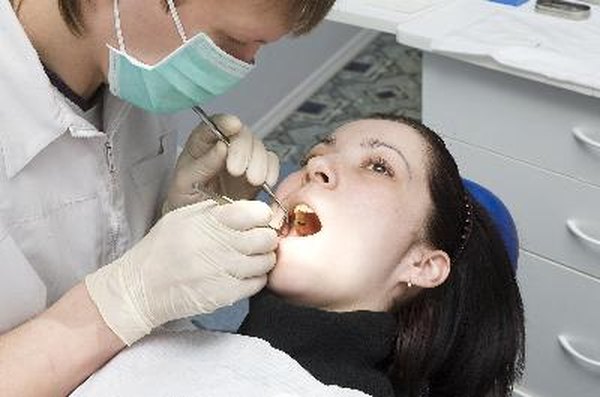Can You Claim Dental Crowns for a Tax Deduction?
Prove that your crown is medically necessary and you can deduct it.
dentist image by pavel siamionov from Fotolia.com
Dental work can be a major cost as a result of hard-to-obtain materials, plus techniques and innovations requiring high skill levels for practitioners. Dental equipment is also sophisticated and expensive, and such costs are typically passed along to patients. Dental insurance coverage can leave a substantial portion of your dental bills to you and your checkbook. Tax preparers are regularly asked whether the cost of pricey crowns can be deducted when filing tax returns. The answer is: it depends.
A Crown by Any Other Name
A dental crown is a cap that’s cemented to the tooth to restore a damaged, injured, or otherwise disfigured tooth to its former shape, size, strength and appearance, so oral health is restored and the recipient can function normally. Once a crown is in place, what remains of the natural tooth is obscured down to or below the gum line. Dentists may call crowns caps, veneers or jackets. Metals, porcelain-metal fusions, ceramic, or resin can be used to craft a crown.
Is Your Crown a Medical Necessity?
If you itemize your taxes, you can claim medical expenses when you file your Schedule A, Form 1040 each year. Out-of-pocket dental expenses are allowable as long as they total or contribute to 7.5 percent of your adjusted gross income. You could claim one or more crowns, as long as they are part of therapy undertaken to rehabilitate your bite following an accident, disease or illness. Your dental practitioner must properly code the procedure on your dental chart, in case the IRS questions the crown expense.
Is Your Crown a Cosmetic Fix?
Veneers, crowns and caps placed on the teeth for cosmetic reasons can’t be deducted or counted among your medical expenses when you file your taxes. The Internal Revenue does not allow a taxpayer to deduct work done on healthy teeth just so the person looks more attractive.
An Allowable Deduction Compromise
As long as the first condition applies — medical need — there are situations in which you can also claim an auxiliary cosmetic crown procedure. If the cosmetic crown placement is an inseparable part of the work undertaken to save your teeth and bite, you may have a deduction, but don’t presume that your situation is automatically covered without consulting your accountant first.
Best Time to Have Crown Work Done
If you want to increase your medical deductions or you require additional medical expenditures to reach the maximum allowable 7.5 percent of your adjusted gross income by year’s end, and if your doctor has recommended one or more crowns to rehabilitate your oral health, a good time to have the work done is at the end of the calendar year. Typically, dental benefits are used up during the first three quarters of the year and many people delay needed work until after the beginning of January. If you find yourself with more income than anticipated in a given year and need a deduction to offset that gain, December is a favorable time to act, while you still have time to add a crown to the year’s deductions.
References
Writer Bio
Based in Chicago, Gail Cohen has been a professional writer for more than 30 years. She has authored and co-authored 14 books and penned hundreds of articles in consumer and trade publications, including the Illinois-based "Daily Herald" newspaper. Her newest book, "The Christmas Quilt," was published in December 2011.

